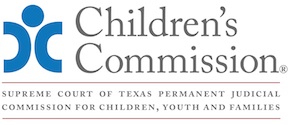C. Trauma-Informed Practices
1. Increase Accessible and Effective Trauma Services Through Education and Collaboration Among the Many Stakeholders (mental health providers, caseworkers, foster parents, caregivers at kinship placements and residential treatment centers, judges, attorneys, CASAs, medical community, law enforcement)
Collaboration leads to:
• Better screening (brief, focused inquiry) at initial contact;
• More detailed assessments (a more in-depth exploration by a trained mental health professional of the nature and severity of the traumatic events, and current trauma-related symptoms);
• More specialized, evidenced-based treatments (with mental health professionals);
• Less misdiagnosis of schizophrenia, psychosis NOS, borderline personality disorder, and conduct or oppositional-defiant disorder;
• Fewer psychoactive medications, restraints and seclusions; and
• More self-reporting of trauma by children and youth survivors.
◦ children and youth become educated about effects of trauma, e.g. violent physical abuse in childhood may not be disclosed because it is thought of as “discipline” or “normal”
◦ the fear, guilt or shame of perceived mental illness is lessened once child is able to connect the trauma and its effects
◦ promote positive neurological effects on the foster youth’s immune function and overall physical health through disclosure of and confrontation of trauma
2. Create Environment of Safety, Respect, Honesty, and Humility to Nurture Healing, Rehabilitation, and Resiliency
• Communicate to the children in foster care that their caregivers believe abuse and violence are significant events. Survivors’ healing stories often begin with the experience of being believed, taken seriously and protected by an adult.
• Develop a shared understanding of the role that trauma has played in shaping the survivor’s life. Connect trauma concerns with the rest of the child’s problems and goals, and understand that experiences of physical, sexual, and emotional abuse can shape fundamental patterns of perceiving the world, other people, and oneself.
• Identify current circumstances that may trigger trauma responses, e.g., unexpected touching, threats, loud arguments, violations of privacy or confidentiality, being in confined spaces with strangers, or sexual situations.
• Determine potential contraindications to use of restraint (and other coercive measures).
• Be watchful for other less obvious triggers that become evident as you know the child better and as he or she recognizes and can express her or his individual stress responses more accurately.
• Enable children to understand their strengths (adaptive capacities) as well as weaknesses that have grown out of their responses to horrific events, rather than seeing their “symptoms” and “disorders” as evidence of fundamental defects. Identify with child the resources such as social support, self-esteem and resilience, self-comforting, sense of meaning and purpose – to help them to recognize and draw on underused strengths.
• Help children and youth identify strategies helpful in the past in dealing with overwhelming emotions. Place priority on child’s preferences regarding self-protection and self-soothing needs by using de-escalation preference surveys.
3. Increase Visitation
Minimize the trauma from removal and attachment disruption by increasing visitation with parents, siblings and other close family (especially in children ages zero to three) to provide meaningful and consistent connections with appropriate family members.
4. Promote Comforting and Calming Techniques
Encourage collaborative service plan. If crisis occurs again, caregivers in foster homes and residential can draw on the child’s own knowledge of what has previously helped and hurt. Prepare for de-escalation in foster homes and residential treatment centers.
5. Provide Ongoing Support for Caregivers
Responses of care giving adults to traumatic events are significant. Survivors often report the debilitating effects of being disbelieved, or having their accounts minimized or dismissed.
6. Encourage Foster Youth Connection with Healthy Adults
Facilitate connections with “persons of character”, e.g. CASAs.
7. Help Reduce Barriers to Youth Participating in Positive Activities of Interest
Problem-solve transportation issues preventing youth from engaging in positive afterschool activities, tutoring, etc.
